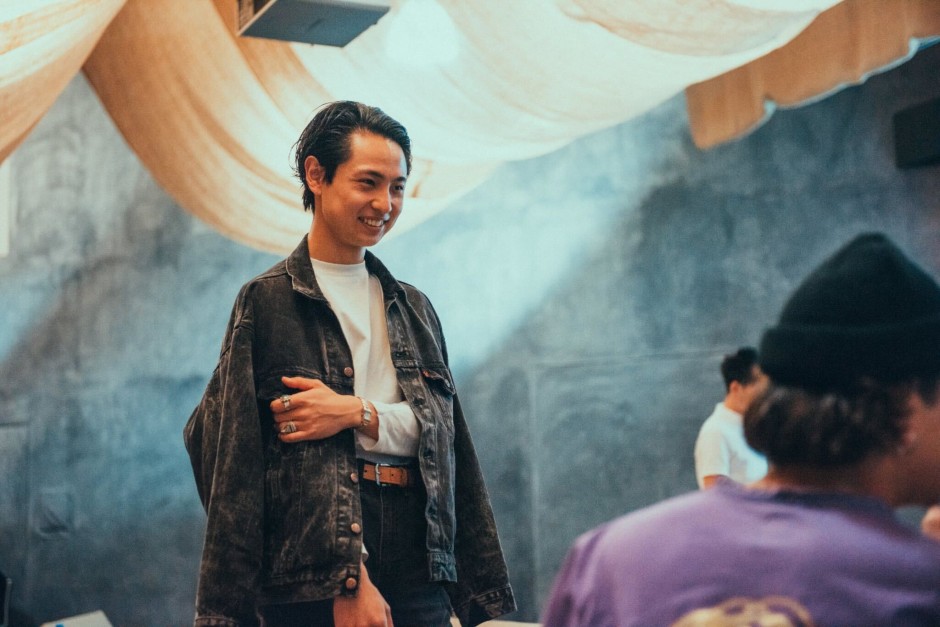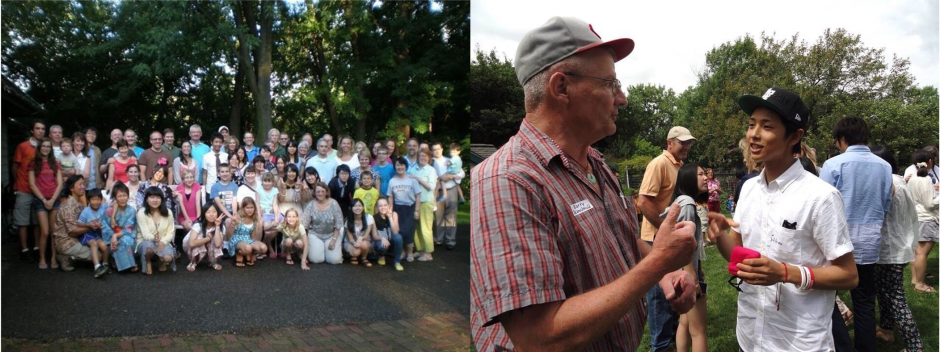Q&A with TOMODACHI Program Participants and TOMODACHI Alumni: Hikaru Sato

For April’s Alumni Highlight we highlighted Hikaru Sato, who is an alumnus of the TOMODACHI Coca-Cola Educational Homestay Program. The program provides high school students affected by the Great East Japan Earthquake of March 11, 2011 with the opportunity to take part in a cultural exchange in the United States. Hikaru is currently doing his Master’s in a program called Narrative Environment at Central Saint Martin University of the Arts London. After participating in the TOMODACHI program, Hikaru began an underground movement through social media focused on music and the young club scene for youth to not only connect with one another to showcase fashion, music, and interests, but to become socially and politically aware and have a safe space to discuss with one another.
Today I would like to talk about one of the most important experiences of my university life, TOMODACHI.
TOMODACHI is a public-private partnership that was established to support the recovery from the Great East Japan Earthquake. When I was a freshman in high school, I participated in a three-week short-term study abroad program in the United States sponsored by Coca-Cola and TOMODACHI. There are also several other separate programs with well-known private companies such as Softbank and MUFG. There were many subsequent opportunities for participants in each of these programs to interact with other alumni, and I was actively involved in these activities until about my junior year of college.

TOMODACHI Coca-Cola Educational Homestay Program
By 2016 when I became a university student, the size of TOMODACHI Alumni had expanded to roughly 7,000 people nationwide. A project was launched to establish a network for alumni, and I was chosen to be one of the leaders in the Tohoku region. About 10 high school students and 10 university students were selected to be paired with a mentor from the business community. They were all incredibly talented people, the high school students in particular. They were able to understand and discuss topics like “using the framework to visualize issues, identify tasks, etc.” in English.

TOMODACHI Alumni Regional Framework
I could barely speak English at the time, but I seriously didn’t understand anything before the program. (I cried on the upper floors of Prudential’s headquarters because I didn’t understand anything.) I thought I was an outstanding person after being involved in TOMODACHI-related projects, but I think I finally realized that I had been fooling myself by doing light work to cover up my lack of ability.

I had a lot of really amazing experiences that I still think were amazing thinking back on them now.
1) Went to study abroad as a freshman in high school in the U.S.
2) Met a lot of people from various large companies.
3) Participated in a student global summit in the Ministry of Foreign Affairs
4) Met Prince William
5) Met Ms. Akie Abe
And so on…

I was able to learn and experience things that I would never have been able to do at school, and of course some of the experiences led to my personal growth. But from around stage (2) in my experience mentioned in the previous paragraph, “participation itself” became the goal, and I was satisfied with these glittering words. This goal gave me a rebuke for mistaking experience for ability.
It also changed my view of what it means to contribute to society. (This is the important part). I want to contribute to society in some way.
I have always had a vague belief that I wanted to contribute to society in some way, ever since I got involved with TOMODACHI. I had no relatives that I lost from the disaster, so the disaster actually was a positive thing for me, as it allowed me to study abroad. I have a selfish sense of mission to “give back to society more than I received” just because I happened to live in the Tohoku region and received the opportunity. So, even though my participation was for the purpose of participating, I worked extremely hard on every opportunity that I took part in. I am sure that Kaoru-san saw that and invited me to be a leader…that’s how I understand it.
At any rate, the saddest thing for me as a 13-year-old (at the time of the earthquake in 2011) who witnessed the reality of the disaster area was the wall between survivors and the rest of the people. Many people who had no connection to the Tohoku region helped the affected areas, but I sometimes saw people saying things like, “You don’t understand how hard it is for the victims,” or “You are hypocrites,” or something like that. I couldn’t sympathize with them, but I somehow understood why the locals thought that way, so I thought that as a native local, I should work in a city (like a national government or a big company) and become a bridge between communities with such barriers.
By the time of this leadership project, I had become a bit wiser and I could talk a lot about local development, how politics and entrepreneurship can help, and other small things. However, I finally came to realize that my experience and knowledge were just tools to compete with the best and brightest.
For me, when I genuinely wanted to contribute to society, “society” was the environment around me, including myself, but gradually I began to feel that it had become “a set of other people who exist in isolation from me”. Such things may seem hypocritical, and I may not feel native.
I was often bothered by the ideology of “society should be like this,” but I understood that I had begun to perceive society in a way that was essentially the same, with my own self-confidence as a metaphysical entity. So, I realized, to my shame, that social contribution is not about actions or words that others consider good, but about “positive action toward the environment I am in,” and that what I need to change is not society but my own vector of actions and feelings.
I am now a university student, which is a little closer to adulthood, and I want to have a sense of efficacy toward the people around me as soon as possible. This is the main purpose of this project. (Then what is it that you can do because you are you?)
I am very grateful to Kaoru N. Utada for accepting my motivation and giving me many opportunities, and to Tomoko Yoshida for giving me the chance to get involved with TOMODACHI.
I worked with Fumiya Ohtani and Hiroto Konno at Red Bull, and just before I moved to London, they came to my farewell party along with Yuto Kimura and Shota Eda.

Koh Matsuki has invited me to participate in art projects, which I will explain separately, and we have had a long relationship since we started working at TOMODACHI.
Looking back, I wonder how Miki Kato and Miyu Sugita, who were on the same team, are doing, or if Shigenari Ishii is still using Tiffany. Since Ena Nakata commented after a very long time (I was so happy), I also check everyone’s FB posts.

My interview is getting long, but I think that giving updates like this is the biggest commitment I can make to my friends and acquaintances right now, in addition to trying to understand myself.
It’s taking a while, but it’s like a New Year’s greeting card, reporting how I’m doing my best and what I have been up to.
Finally, many of the TOMODACHI programs were named “leadership programs”. Leaving aside what others may think of me, the reason I am confident in my leadership has always had its roots here. After all, confidence is the most important thing. I’ve been able to go out on a limb in my work and in my life in London. For me, who still lacks confidence, this small thing is my strength and vitality.
This alumni highlight was translated by Karina Quinn and Alex Favis on March 23, 2025. Karina and Alex are currently interns with the TOMODACHI Alumni Leadership Program.


